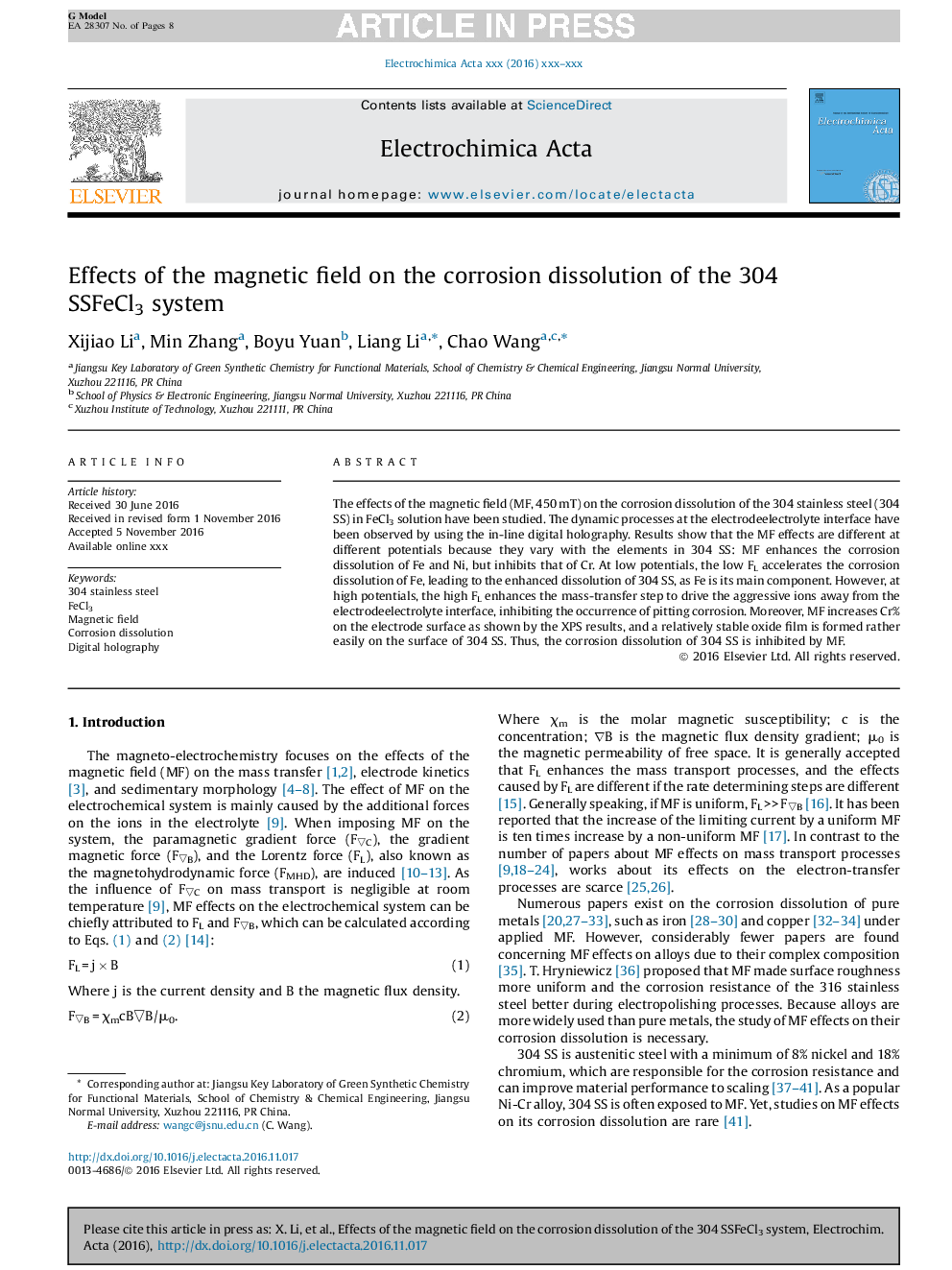| Article ID | Journal | Published Year | Pages | File Type |
|---|---|---|---|---|
| 6472654 | Electrochimica Acta | 2016 | 8 Pages |
Abstract
The effects of the magnetic field (MF, 450Â mT) on the corrosion dissolution of the 304 stainless steel (304 SS) in FeCl3 solution have been studied. The dynamic processes at the electrodeâelectrolyte interface have been observed by using the in-line digital holography. Results show that the MF effects are different at different potentials because they vary with the elements in 304 SS: MF enhances the corrosion dissolution of Fe and Ni, but inhibits that of Cr. At low potentials, the low FL accelerates the corrosion dissolution of Fe, leading to the enhanced dissolution of 304 SS, as Fe is its main component. However, at high potentials, the high FL enhances the mass-transfer step to drive the aggressive ions away from the electrodeâelectrolyte interface, inhibiting the occurrence of pitting corrosion. Moreover, MF increases Cr% on the electrode surface as shown by the XPS results, and a relatively stable oxide film is formed rather easily on the surface of 304 SS. Thus, the corrosion dissolution of 304 SS is inhibited by MF.
Related Topics
Physical Sciences and Engineering
Chemical Engineering
Chemical Engineering (General)
Authors
Xijiao Li, Min Zhang, Boyu Yuan, Liang Li, Chao Wang,
